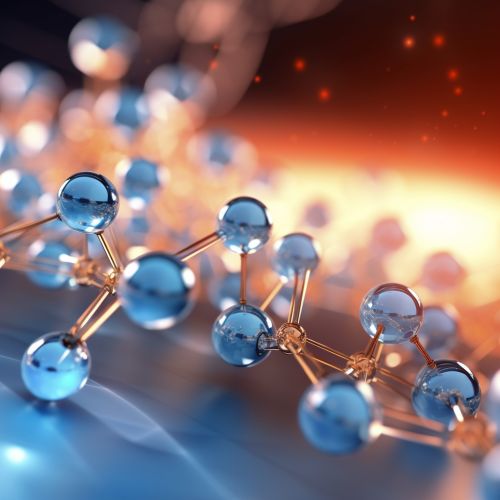Photolabile Groups
Introduction
Photolabile groups, also known as photolabile protecting groups, are a class of chemical moieties that can be removed from a molecule by exposure to light. They are widely used in the field of organic chemistry, particularly in the synthesis of complex organic molecules, and have found applications in various scientific disciplines, including biochemistry, pharmacology, and materials science.


History and Development
The concept of photolabile groups was first introduced in the late 20th century, as chemists sought more precise and controllable methods for protecting reactive sites on molecules during synthesis. The use of light as a trigger for deprotection offered a high degree of spatial and temporal control, making photolabile groups an attractive option for complex syntheses. Over the years, a wide variety of photolabile groups have been developed, each with their own unique properties and applications.
Types of Photolabile Groups
Photolabile groups can be broadly classified into two categories: caged compounds and photocleavable linkers.
Caged Compounds
Caged compounds are molecules that have been rendered inactive or less active by the addition of a photolabile group. Upon exposure to light, the photolabile group is removed, restoring the molecule's original activity. This technique is often used in biological research to precisely control the activity of biomolecules such as neurotransmitters and enzymes.
Photocleavable Linkers
Photocleavable linkers, on the other hand, are used to connect two molecules together. Upon exposure to light, the linker is cleaved, releasing the two molecules. This technique is often used in the field of drug delivery, where it can be used to release a drug molecule at a specific location within the body.
Mechanism of Action
The mechanism of action of photolabile groups involves the absorption of light, which leads to the excitation of electrons within the group. This excitation causes a change in the group's chemical structure, leading to its removal from the molecule it is attached to. The exact mechanism of action can vary depending on the specific type of photolabile group and the wavelength of light used.
Applications
Photolabile groups have found a wide range of applications in various scientific disciplines.
Organic Chemistry
In organic chemistry, photolabile groups are often used as protecting groups in the synthesis of complex organic molecules. They allow chemists to protect reactive sites on a molecule during synthesis, and then selectively remove the protecting group by exposure to light when it is no longer needed.
Biochemistry
In biochemistry, caged compounds are often used to study the function of biomolecules. By attaching a photolabile group to a biomolecule, researchers can precisely control its activity using light. This has been used to study a wide range of biological processes, from enzyme activity to neuronal signaling.
Pharmacology
In pharmacology, photocleavable linkers are often used in the development of drug delivery systems. By attaching a drug molecule to a carrier molecule using a photocleavable linker, researchers can ensure that the drug is only released at a specific location within the body.
Materials Science
In materials science, photolabile groups have been used to develop light-responsive materials. These materials can change their properties in response to light, making them useful for a wide range of applications, from solar cells to optical data storage devices.
Future Directions
The field of photolabile groups is a rapidly evolving one, with new types of groups and applications being developed all the time. Future research is likely to focus on the development of new types of photolabile groups with improved properties, as well as the exploration of new applications for these versatile chemical tools.
